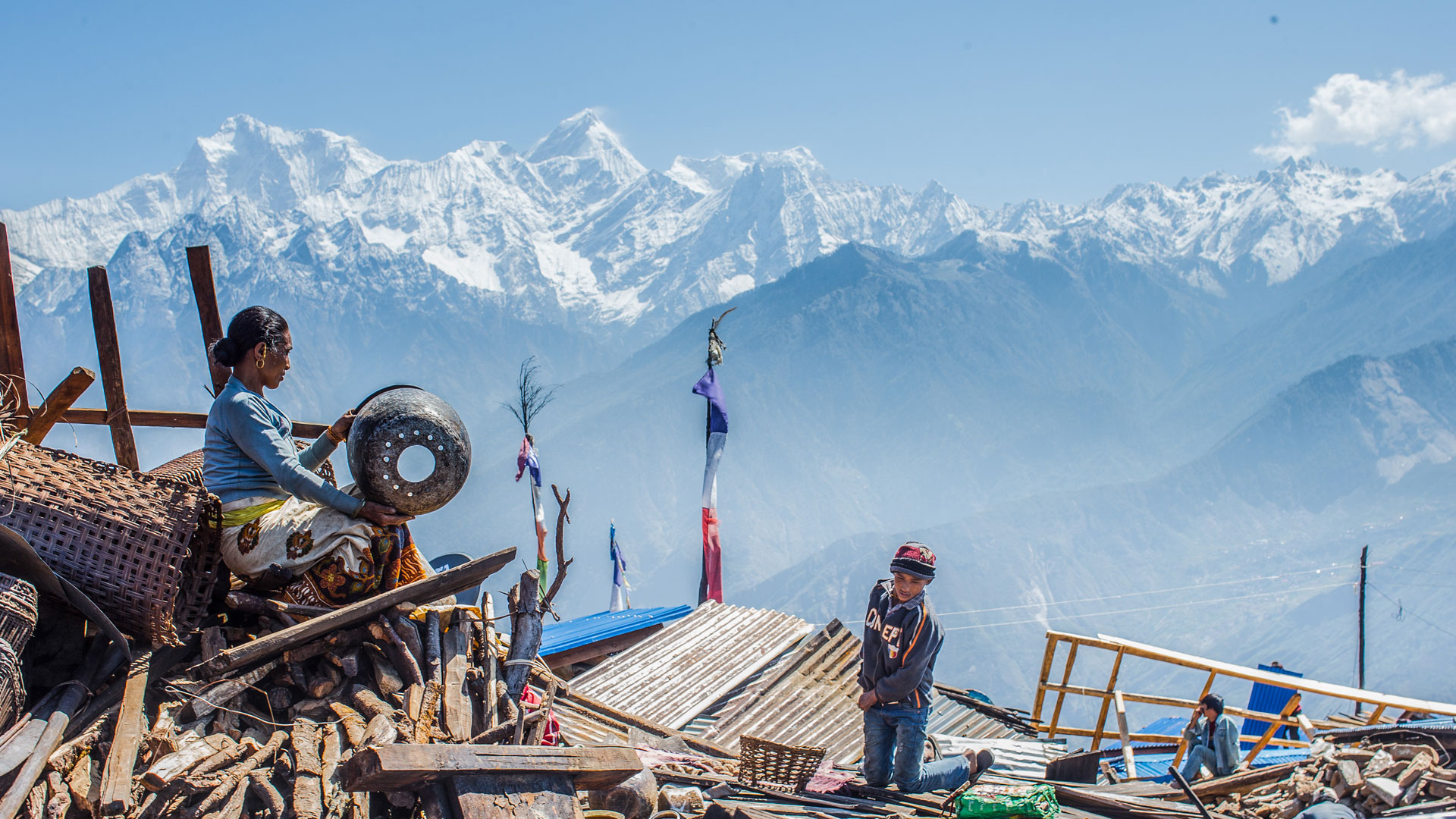Outpacing Disasters and Pandemics to Support Economic Resilience
Disaster Zone
Asia and the Pacific is the most disaster-prone region in the world. It is where more than 75% of those affected by natural disasters live. Exacerbated by the changing climate and now the global pandemic, many countries are being dealt an extreme hand in terms of deaths and damages and the diminishing capacity to respond.
The Asia-Pacific Disaster Report 2019 shows how these disasters are closely linked to inequality and poverty. With at-risk communities disempowered and the economy unable to support and sustain livelihoods, disasters and pandemics are undermining the ability of economic growth to reduce poverty and inequality by 2030.
Outpacing a Disaster
Uncertainty from an unfolding disastrous event stunts an early policy response to a disaster or a pandemic. Policy makers who want to assess the socioeconomic impacts of disasters, economic crises, and other extreme events typically lack access to timely, current information. For example, the dearth of current data on the COVID-19 pandemic during the first months after its appearance limited the governments’ ability to respond effectively. The same is true of the lack of timely data on other disasters triggered by natural hazards, such as floods, droughts, and earthquakes. As a result, the impacts of these phenomena are usually not assessed until long after the event or they remain entirely unknown.
ADB has been actively exploring “nowcasting” solutions that facilitate timely policy interventions. “Nowcasting” is the prediction of economic conditions in the present and very near future. One initiative ADB is exploring is the regional technical assistance Nowcasting and Disasters: Impact-Based Forecasting and Socioeconomic Monitoring. The project, funded by the Japan Fund for Poverty Reduction, seeks to increase the developing members’ capacity for disaster impact assessments and socioeconomic monitoring.
Nowcasting as a Solution
The project has three specific outputs. The first is to consolidate select state-of-the-art, timely, and accessible data and nowcasting technologies for contemporaneous impact assessments. Next is to combine and calibrate data and methods for ready application to the specific circumstances of the developing members. Finally, the project intends to conduct retrospective impact assessments and case studies of previous disastrous events.
The first output will identify key categories of high-frequency data, including big data, key assessment and monitoring contexts, and the methods for collecting, processing, and maintaining these data in select ADB member countries. Some examples are data from daytime and nighttime satellite images, mobile phones, retail behavior, text in news articles and social media, and micro surveys. Data and monitoring technologies will be combined to provide proxies for tracking near-contemporaneous gross domestic product and other headline economic indicators, as well as broader social, environmental, and spatial impact variables.
For the second output, the project will identify minimum data requirements for nowcasting economic baselines and disaster-specific impact indicators across the developing members. From this, suitable nowcasting techniques will be determined depending on how it suits a specific country and disaster. Integrating the tool kit with existing multi-hazard risk assessments, early warning systems, and rapid mapping approaches will also be explored.
As third output, the project will assess the impacts of past disasters and socioeconomic shocks. Examples of these are the COVID-19 pandemic, tropical cyclones in Fiji, and a range of other disastrous episodes that offer opportunities for analysis. This will enable member countries to more rigorously benchmark and nowcast the socioeconomic impacts of future similar events.
The project considers gender in data collection and capacity building and, when applicable, will identify and reflect the impact on the most vulnerable groups likely to be disproportionately affected during disasters and socioeconomic shocks. Specific emphasis will be placed on developing quality knowledge products and events based on learnings from the project.
Getting in Step with a Disastrous Event
Countries have committed themselves to achieve the Sustainable Development Goals (SDGs) by 2030. Disasters and the recent pandemic threaten the gains toward the SDGs unless governments take advantage of emerging technologies to cushion these gains from external shocks.
When the project concludes in 2023, policy makers in ADB’s developing members will have greater capacity to monitor and model scenarios as inputs to policy making during a pandemic or a disaster. Specifically, they will have
- select, consolidated, state-of-the-art, timely, and accessible data sources and nowcasting technologies for contemporaneous impact assessments;
- tool kit of data and methods for ready application to specific circumstances of developing members; and
- retrospective impact assessments and case studies of previous disasters.
Project Details
Regional: Nowcasting and Disasters—Impact-Based Forecasting and Socioeconomic Monitoring
Cost
$2 million
Cofinancing Partner
- Japan Fund for Poverty Reduction (Technical Assistance) $2 million
Dates
Approval Date 10 July 2020
Signing Date
Completion Date 30 June 2023

